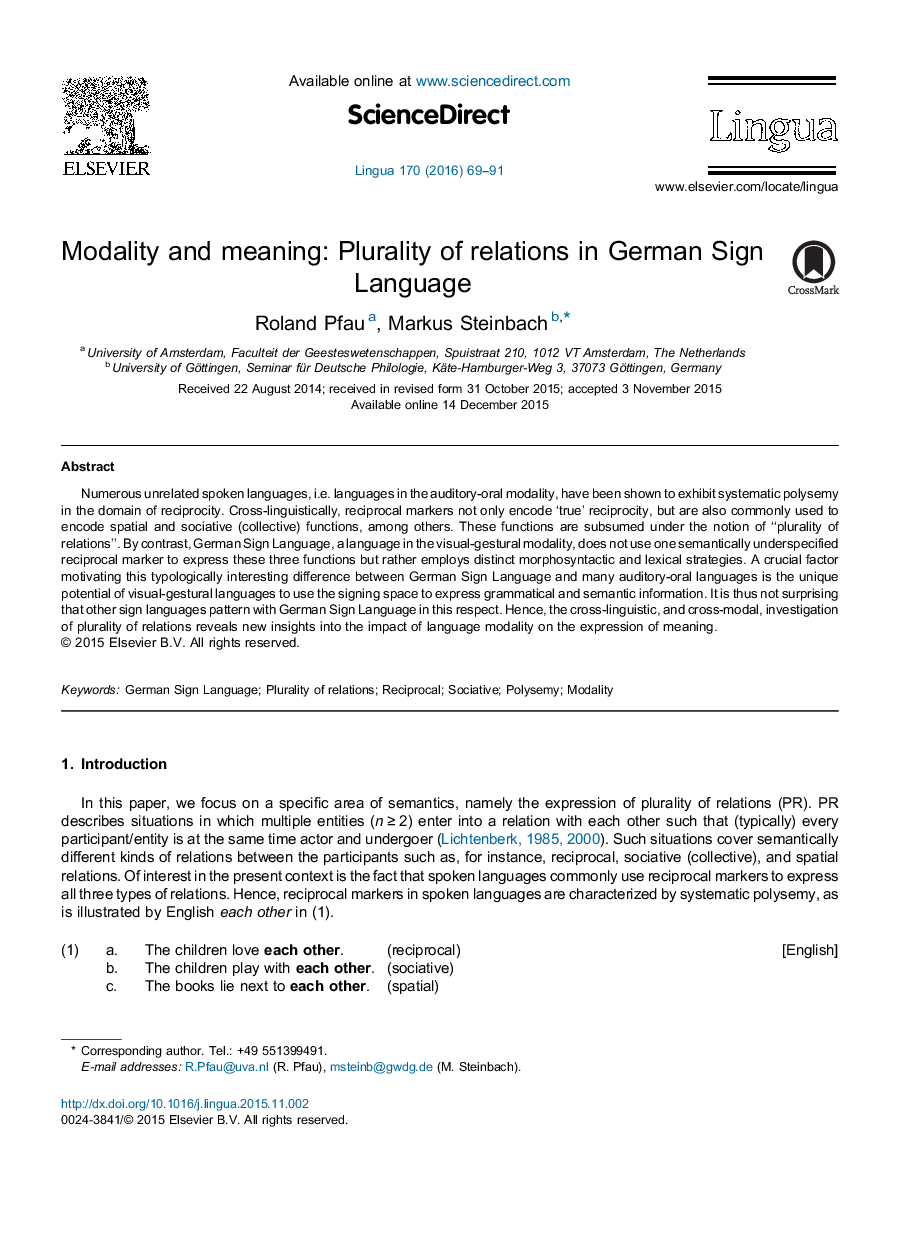| کد مقاله | کد نشریه | سال انتشار | مقاله انگلیسی | نسخه تمام متن |
|---|---|---|---|---|
| 935540 | 1475043 | 2016 | 23 صفحه PDF | دانلود رایگان |
• Spoken and sign languages differ crucially in the morphosyntactic realization of plurality of relations.
• In spoken languages, reciprocal markers express universal quantification and distinctness.
• Unlike spoken languages, German Sign Language does not use an underspecified reciprocal marker.
• Instead, German Sign Language uses different lexical and spatial strategies.
• German Sign Language makes use of options made available by the visual-gestural modality.
Numerous unrelated spoken languages, i.e. languages in the auditory-oral modality, have been shown to exhibit systematic polysemy in the domain of reciprocity. Cross-linguistically, reciprocal markers not only encode ‘true’ reciprocity, but are also commonly used to encode spatial and sociative (collective) functions, among others. These functions are subsumed under the notion of “plurality of relations”. By contrast, German Sign Language, a language in the visual-gestural modality, does not use one semantically underspecified reciprocal marker to express these three functions but rather employs distinct morphosyntactic and lexical strategies. A crucial factor motivating this typologically interesting difference between German Sign Language and many auditory-oral languages is the unique potential of visual-gestural languages to use the signing space to express grammatical and semantic information. It is thus not surprising that other sign languages pattern with German Sign Language in this respect. Hence, the cross-linguistic, and cross-modal, investigation of plurality of relations reveals new insights into the impact of language modality on the expression of meaning.
Journal: Lingua - Volume 170, January 2016, Pages 69–91
